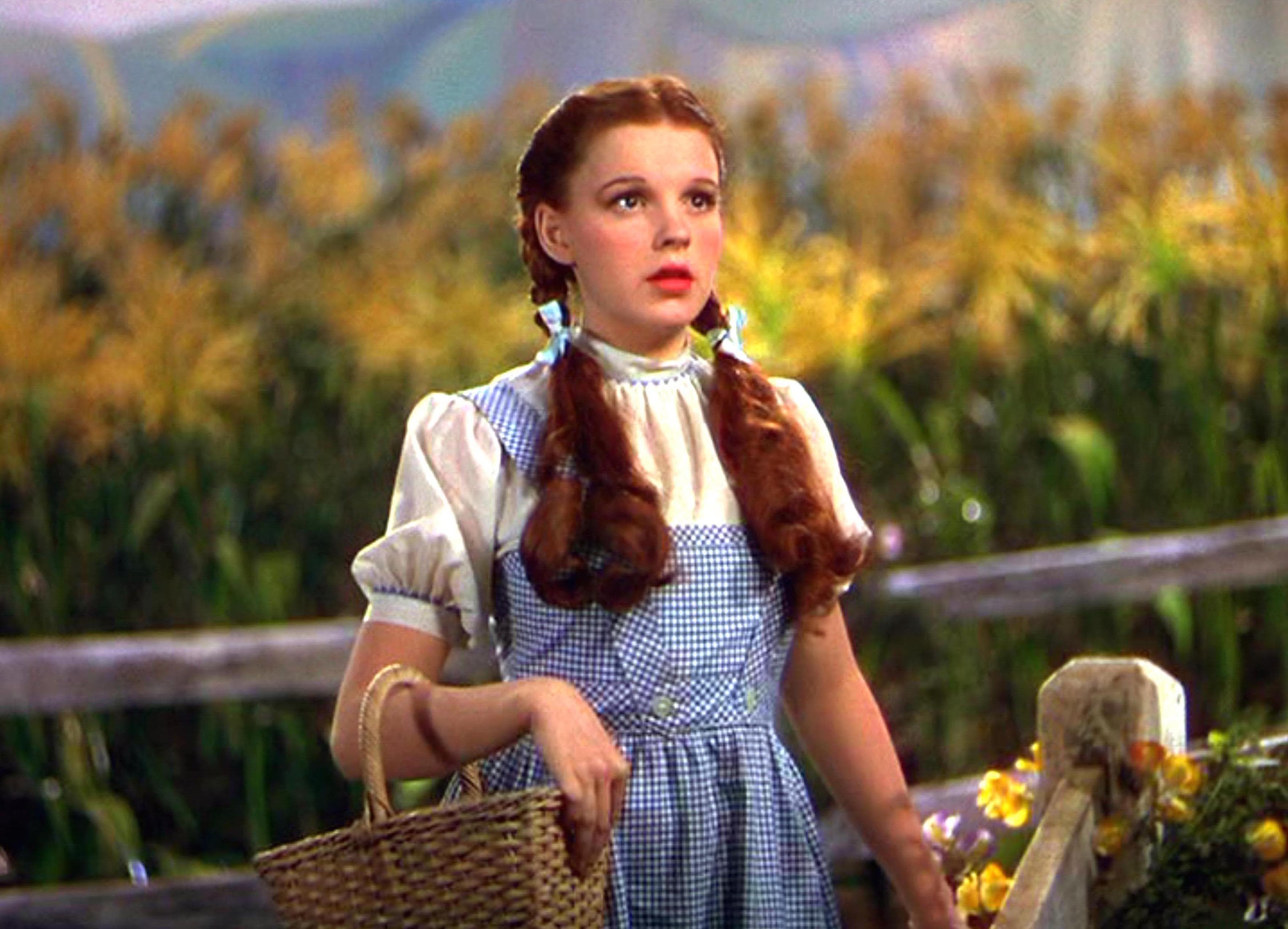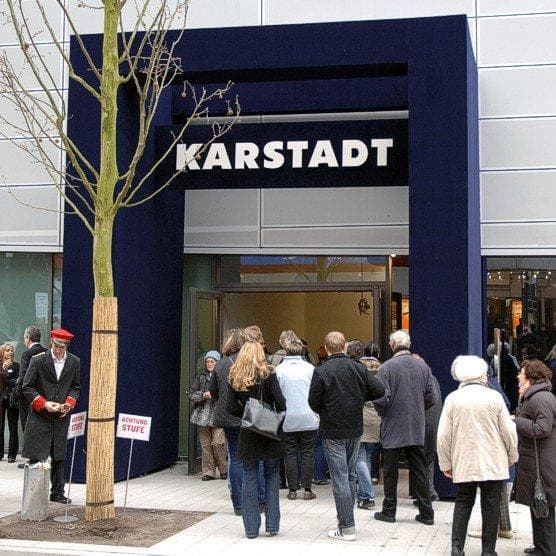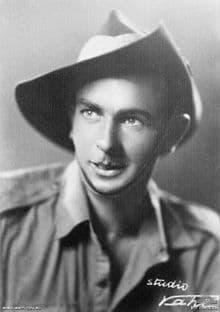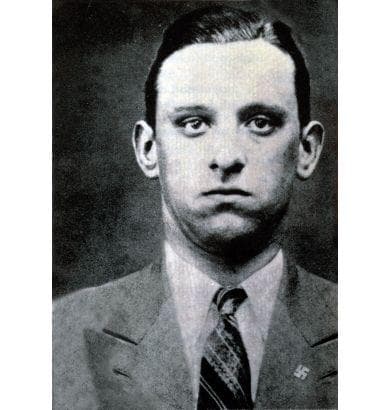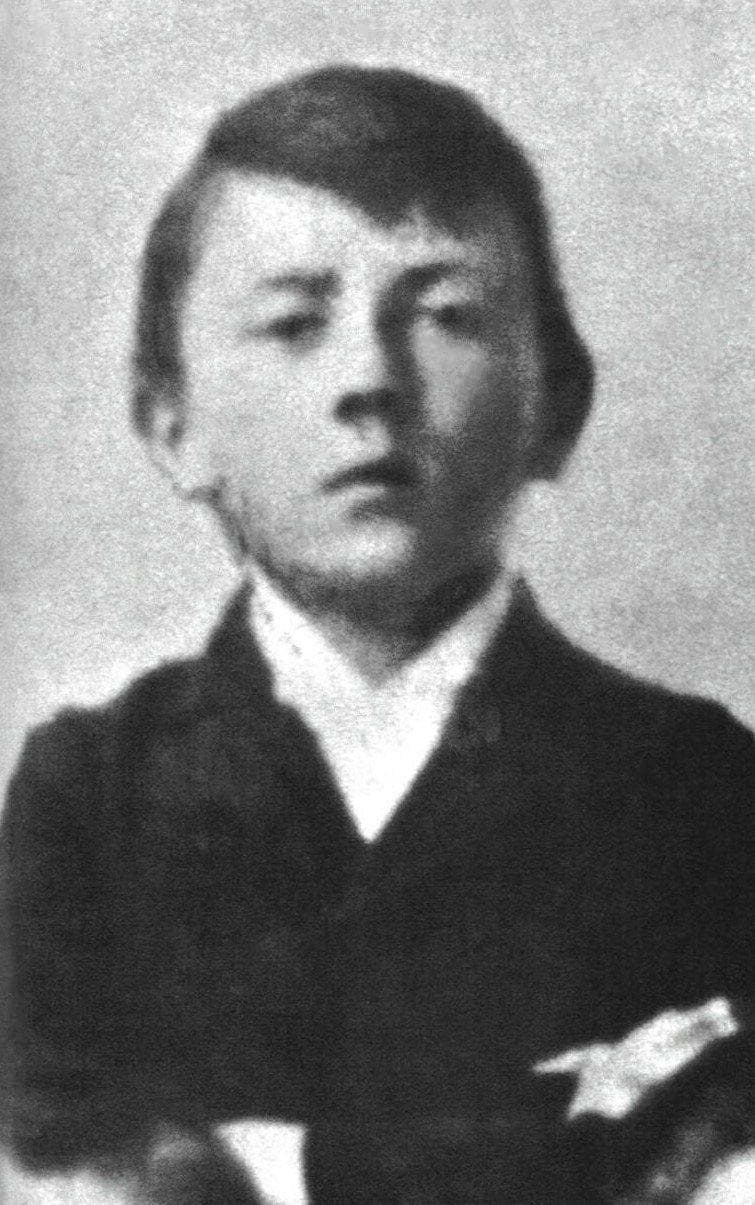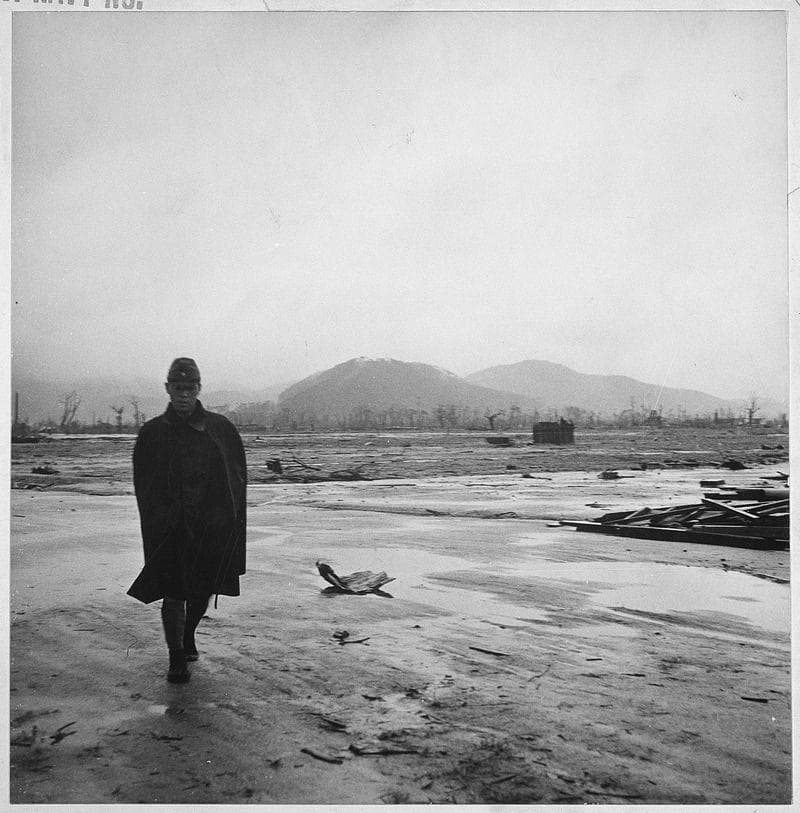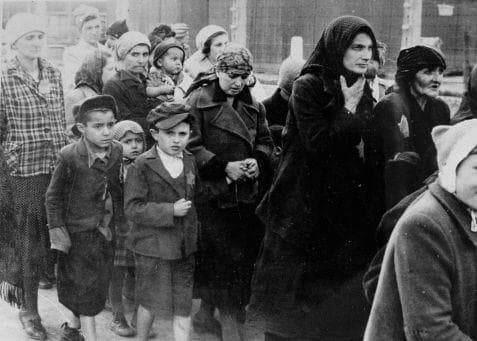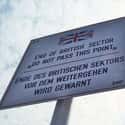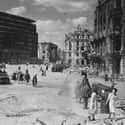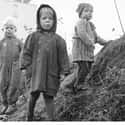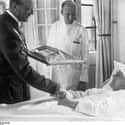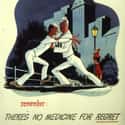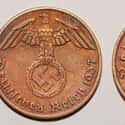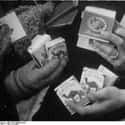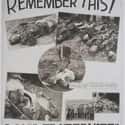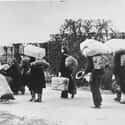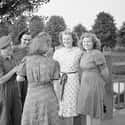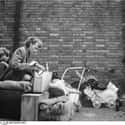-
(#1) Berlin Was Divided
After Germany's defeat, Berlin was divided into four zones, one for each Allied power. As the Allies' relationship with Russia began to deteriorate, it was the Berliners that bore the brunt of that tension. Russia set up what was known as the Berlin Blockade, cutting off all access to the eastern side of Berlin and forcing the other Allies to airlift relief supplies to the needy residents. The early seeds of the Cold War were sewn in the post-WWII tension over Germany; both sides were unwilling to open fire, but Berlin and Germany became cards to be played by the larger world powers.
This would eventually lead to the 1961 erection of the Berlin Wall, which would stand as both a physical barrier and a metaphorical symbol for the bifurcation of Berlin for almost 30 years.
-
(#2) People Lived Amid The Destruction
Berlin was devastated by bombing from WWII (estimates say up to 80 percent of historic buildings in the country's main cities were lost), and reconstruction efforts were slow to get underway. Much of the city was unsafe and uninhabitable, with certain areas falling entirely into disuse.
People were forced to simply make due, continuing their lives as best they could amid the destruction. Businesses got back underway in buildings that were missing walls and roofs, people moved in with family members whose homes were still standing, and patchwork fixes were implemented until real construction work could be done.
-
(#3) Everyone Was Hungry All The Time
The constant shelling and air strikes had also taken their toll on the German countryside, devastating the country's crops and livestock reserves. The infrastructure in and around Berlin was in ruins, making it difficult to bring food in from the outside. Rationing had started during WWII and slowly increased as time went on; by 1946, the British zone had reduced the average German citizen's food allotment to a meager 1,000 calories per day.
The winter of 1946-1947 was known as the "Hunger Winter" and some estimates put the average caloric intake as low as 700 calories per day - well below starvation levels. It is believed that hundreds of thousands of Germans perished from famine and famine-related conditions between 1945 and 1949.
-
(#4) Children Ran Wild
As the denazified school system - not to mention the rest of the German government - was reassembled, the children of Berlin had little to no structure in their lives. Many had been orphaned by the conflict or had lost at least one parent, leading to an overall lack of adult supervisors. Children, and especially teens and preteens, roamed the streets in packs.
When schools did reopen, often in half-ruined facilities, they were underfunded and understaffed, with some schools reporting student-to-faculty ratios of 89 to 1.
-
(#5) An Underground Resistance Formed
Although its reputation has been trumped up due to the work of propaganda minister Joseph Goebbels, Operation Werwolf was supposedly the code name for the German underground resistance. During WWII, they were really just a uniformed paramilitary group, but after the conflict ended, the name Werwolf was sometimes used by the sparse pockets of Third Reich loyalists that fought back.
The destruction of a military outpost in Bremen was claimed as a Werwolf operation, as was the demise of General Nikolai Berzarin, a Soviet commandant in the Soviet sector of Berlin. However, there is no conclusive evidence that these events were the work of the underground group.
-
(#6) Disease Was Rampant
As refugees returned to the city, they brought with them a host of maladies that the undernourished population had a hard time fighting off. Dysentery, typhoid fever, and diphtheria epidemics all swept through Berlin, brought on in part by the city's ruined water and sewage systems. Hospital space, medicine, and medical equipment were all in short supply due to the conflict, and difficulties in production and distribution made replacing lost materials nearly impossible.
Hospital staff was also in short supply, and doctors and nurses were quickly overstretched by the exceeding demand.
-
(#7) Children Of Allied Servicemen And German Women Were Ostracized
STDs soon became a major concern for the military, and it is estimated that as many as 400,000 children of Allied soldiers were born to German women in the years following WWII. These children (and their mothers) were ostracized by both sides, with their German communities shunning them and the Allied governments protecting their soldiers from responsibilities such as child support payments.
While those policies were eventually relaxed, German children of Allied servicemen still faced a number of challenges, especially children of mixed race. Interracial marriages were prohibited in the US until 1948 and the "Negermischlinge," or "Negro half-breeds," were subjected to particularly cruel treatment within Germany.
-
(#8) The Reichsmark Was Worthless
One major problem with the German economy was that by the end of WWII, the Reichsmark had been so devalued that trading with it had become nearly impossible. Inflation caused by desperate overprinting, coupled with the influx of new Allied-printed Marks, had rendered the notes almost worthless and reduced Berlin to what was practically a barter economy. When the Allied occupation introduced the new Deutsche Mark as part of the Marshall Plan, it had a profoundly stabilizing effect on the German economy.
With an established, usable currency, businesses could pay their employees again and people began returning to work. Commerce was actually able to function again, and slowly the machine of the German economy began cranking back to life.
-
(#9) There Was A Thriving Black Market
With strict rationing laws in place, a bustling underground market provided a source for food products, as well as medicine, cigarettes, alcohol, foreign products, and contraband items. Soldiers brought with them their rations, items purchased from the PX, care packages from home (and equipment and supplies swiped from the military), and sold them to a desperate German clientele - with a healthy mark-up, of course.
The escort business thrived, as the male occupying force created a huge demand, and many destitute German women lacked any other options for feeding themselves and their families. Many of these illicit transactions happened privately; however, there were also several large outdoor markets, such as the one in Tiergarten, where soldiers mixed with the Berlin natives and products of all sorts were available for trade.
-
(#10) Fraternization Between Allied Troops And German Citizens Was Illegal
- Military Policy
When the US first took Berlin, there were strict non-fraternization rules in place. American soldiers were prohibited from engaging in private correspondence, receiving gifts, or even speaking to German citizens. Perhaps unsurprisingly, a large number of soldiers violated these orders. There were hundreds of arrests made, and even the Army acknowledges that this was just a small percentage of the fraternization that they knew was happening, with as much as 80 percent of enlisted men estimated to have broken the rules at some point.
Despite the risk of court-martial, imprisonment, loss of pay, or dishonorable discharge, contact between soldiers and citizens - particularly women - was seen as almost unavoidable. According to Major William Hill, "Soldiers are going to have their fling regardless of rules or orders. If they are caught they know what the punishment will be. However, that is not stopping them and nothing is going to stop them."
-
(#11) Displaced People Were Everywhre
After WWII, there were nearly 7 million people who were attempting to return to their homes in Allied nations alone - or worse, they found that they had no home left. Returning concentration camp survivors, POWs, and other refugees wandered the country primarily on foot, sometimes staying in DP camps, other times just taking shelter where they could find it. Displaced persons, otherwise known as DPs, were often subjected to horrific treatment during their journeys, only to find themselves further ostracized once the got home.
Fairly and unfairly, a large amount of crime was attributed to DPs, many of whom were accused of petty theft to feed themselves; some were even accused of more heinous acts. These incidents led to a fear and distrust of DPs, who then faced suspicion and rejection during peacetime after already suffering through the horrors of WWII.
-
(#12) The Non-Fraternization Policy Was Lifted, In Part, Because Of Children
- Change in Military Policy
After struggling for months with trying to curtail all contact between Berlin residents and the occupying Allied forces, the British and US militaries began relaxing - and then ultimately reversing - their non-fraternization policies. First, General Dwight D. Eisenhower permitted contact with residents under 12 years of age because soldiers had perceived the ban (correctly) as forcing them to act rudely or cruelly toward children.
This opened up other gray areas in the fraternization laws, which became increasingly more difficult to apply. Finally, the Allied powers changed course and began to encourage fraternization as a way to promote cooperation in the rebuilding efforts.
-
(#13) Hundreds Of Thousands Of Women Were Raped By Allied Forces
The women of Berlin had a number of brutal trials to face, one more awful than the next. Millions of women were widowed as a result of the conflict, many of them with children to care for. Many women had lost their only means of financial support, either because their husband or family had perished, or because their means of employment had been destroyed or shut down.
Worse still, the occupying armies were cruel toward the defenseless native population. Forced intercourse became a tragic part of reality for German women, with millions of women being victimized at the hands of occupying soldiers. This "Unknown Holocaust" is a shameful part of the victors' history that is often left out of accounts of the reconstruction.
-
(#14) Allied Forces And German Citizens Came Together During Reconstruction
The German defeat was unilateral, and with information about the cruelties of the regime becoming public, there was little support left for the Third Reich. The Nuremberg Trials began in 1945 and only added to the shame and resentment the people felt toward their former ruling party. Citizens and soldiers began working together to clean up the devastation in Berlin, and especially with the passing of the Marshall Plan, an atmosphere of cooperation was established.
Besides, with all of the weapons, ammunition, and able bodies going to the front, there weren't really the resources to mount much of a resistance.
New Random Displays Display All By Ranking
About This Tool
In May 1945, Germany, which launched WWII, declared defeat under the joint resistance of the anti-fascist allies. The armored forces of the Soviet Union that invaded Germany almost used tanks to blow up most cities into rubble. 55% of the ancient buildings in Munich have been destroyed, and only broken walls in the capital Berlin, the Cologne Cathedral stood alone in the ruins, which all shows the harsh life in Germany after WWII.
As a defeated country, Germany's economy collapsed, production stagnated, and supplies were extremely scarce. The German nobles could not protect themselves, let alone the poor people. The random tool explained 14 details about the harsh realities in Germany after WWII.
Our data comes from Ranker, If you want to participate in the ranking of items displayed on this page, please click here.

